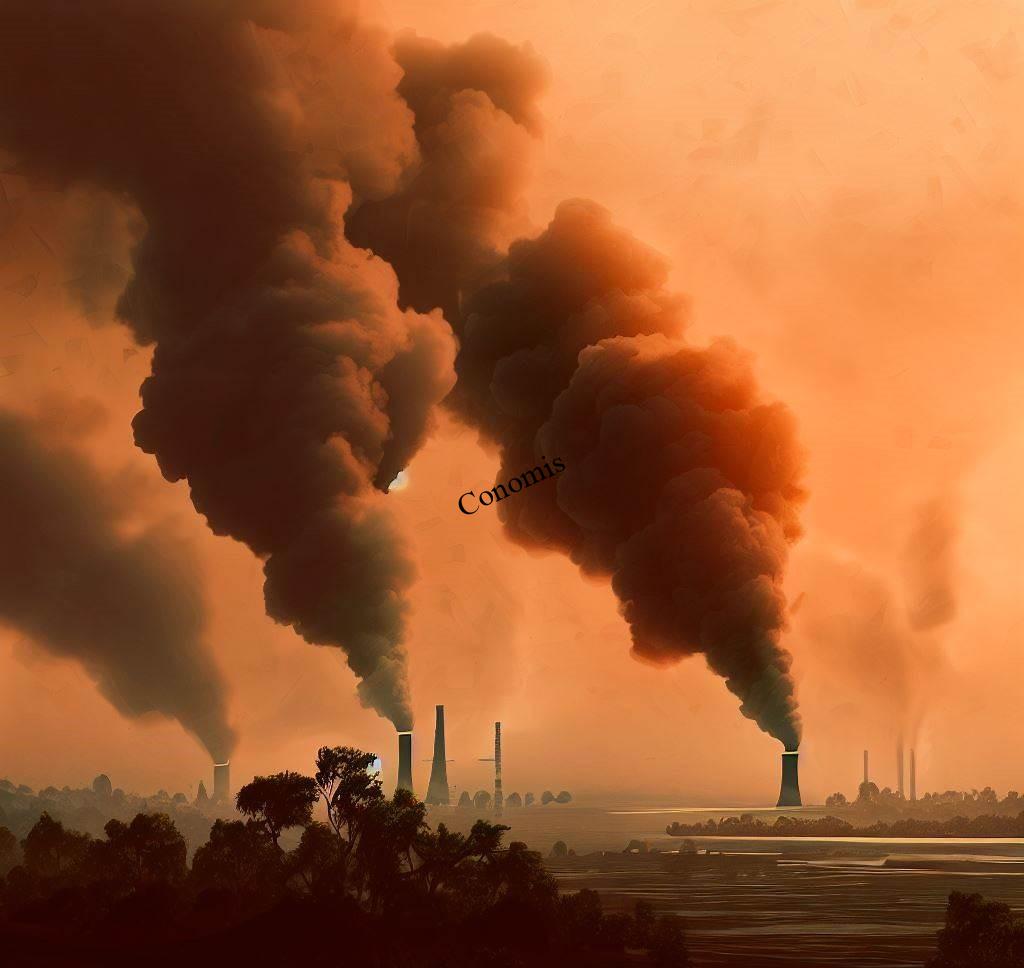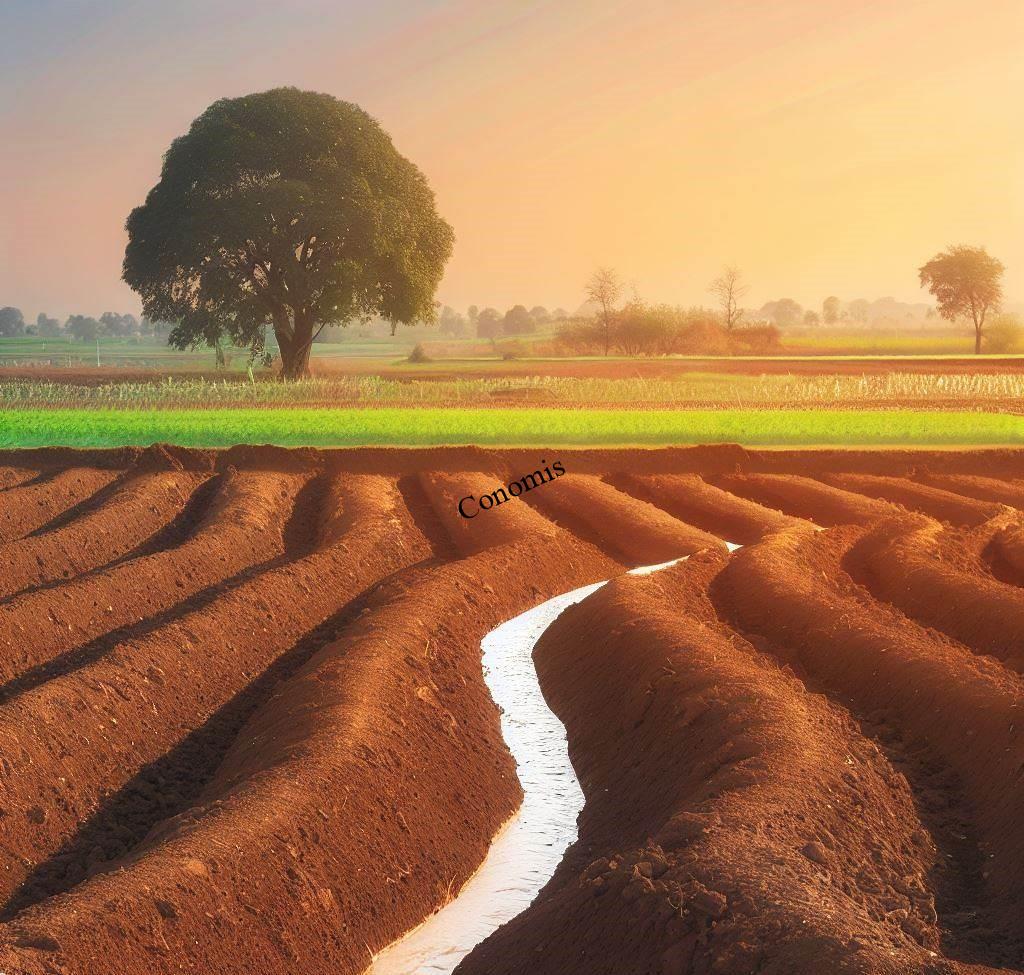Table of Contents
Introduction
Importance of Earth Conservation
The Earth is far more than just a celestial body orbiting the Sun; it’s the cradle of life as we know it, our home. When we pause to consider that this planet is the source of the air we breathe, the water we drink, and virtually every resource we consume, the importance of taking good care of it becomes starkly apparent. It is a self-sustaining system, full of wonders and intricacies that boggle the mind, from the rainforests that act as the Earth’s lungs to the oceans that cover more than 70% of its surface.
Yet, despite all the benefits that Earth provides us, human activity has often led to its degradation. Be it through deforestation, pollution, or the relentless consumption of natural resources, we’ve put this planet under immense stress. These actions not only jeopardize our future but also endanger countless species that share this world with us. It’s disheartening to acknowledge that we’ve taken the Earth’s generosity for granted for so long.

But it’s not too late. Every individual action, no matter how small, can contribute to a broader change. After all, it’s not just about saving the Earth; it’s about ensuring a livable, thriving environment for future generations. The planet doesn’t need us to survive; we need it. Thus, Earth conservation isn’t merely an ethical or altruistic pursuit—it’s a matter of existential importance.
Climate Change: A pressing issue
Climate change is more than just a buzzword or a topic for academic discussion; it’s a glaring, immediate crisis that has tangible impacts on our lives and the planet. The signs are unmistakable and widespread. Glaciers are melting at an alarming rate, contributing to rising sea levels that threaten coastal communities. Extreme weather events, such as hurricanes, floods, and droughts, have grown more frequent and devastating, displacing populations and disrupting ecosystems.
But the issue goes beyond the immediate and visible effects. Climate change also exacerbates other environmental crises, from loss of biodiversity to increased water scarcity. The more the climate alters, the more challenging Earth conservation efforts become. For instance, altered weather patterns can affect the habitats of various species, making it even more difficult to implement effective conservation strategies. This creates a vicious cycle, where climate change undermines conservation efforts, and weakened ecosystems, in turn, become less resilient to climate shifts.

So, what role does Earth conservation play in this intricate web? It’s simple: by focusing on Earth conservation, we can build resilience against the impacts of climate change. This means protecting our forests, preserving our oceans, and fostering sustainable communities that can better withstand the looming challenges. In this context, Earth conservation isn’t just a moral obligation but a practical necessity. Addressing climate change isn’t just about reducing greenhouse gas emissions; it’s also about strengthening the Earth’s natural systems to better cope with the changes already underway.
The Relationship Between Climate Change and Earth Conservation
The Climate-Earth Conservation Nexus
The relationship between climate change and Earth conservation is an intricate one, bound together in a cycle of cause and effect. Think of it as a two-sided coin; one side represents the adverse impacts of climate change, and the other embodies the imperative for Earth conservation. The link between the two is not only logical but also vital for the survival and well-being of the planet and its inhabitants.
Human activities have been the primary catalyst for climate change. From burning fossil fuels to deforestation, we’ve accelerated the natural processes that lead to climate variation. The consequences of these activities are manifesting in the form of erratic weather patterns, rising temperatures, and the degradation of natural habitats. This upheaval creates an environment where the Earth’s natural systems struggle to maintain a state of balance. As we continue to grapple with these challenges, it necessitates more aggressive and targeted Earth conservation efforts.

To combat climate change, we cannot focus solely on reducing greenhouse gas emissions. Although essential, this is only part of the equation. We also need to engage in proactive Earth conservation measures. This includes the protection of vulnerable ecosystems, the restoration of natural habitats, and the sustainable management of resources. In essence, Earth conservation amplifies our capacity to mitigate the damages caused by climate change. It acts as a buffer, offering the planet some much-needed resilience against the stresses inflicted upon it. By understanding and acting on this Climate-Earth Conservation Nexus, we position ourselves better to protect our only home.
The Role of Human Activity
Discussing climate change without acknowledging the role of human activity is like talking about smoking without mentioning its health risks—it’s an incomplete narrative. Over the past couple of centuries, especially since the onset of the Industrial Revolution, human actions have profoundly impacted the Earth’s climate. The factories belching out smoke, cars burning fossil fuels, rampant deforestation to make way for agriculture and settlements—these are all human-induced activities that have accelerated the rate of climate change.
But the impacts aren’t limited to just pumping greenhouse gases into the atmosphere. Human activities have also led to habitat destruction, soil degradation, and water pollution, all of which contribute to a more vulnerable planet. These actions have set off a chain reaction, triggering more frequent natural disasters and creating unstable living conditions for both humans and wildlife. In essence, we’ve essentially shot ourselves in the foot. While our ancestors may have done these things out of ignorance or necessity, we have the benefit of scientific knowledge and thus bear the responsibility to make amends.

So, what does this mean for us now? It means that tackling climate change requires a multi-faceted approach that not only aims to reduce emissions but also promotes responsible behavior. We have to shift from being the problem to becoming part of the solution. The importance of human activity in this context cannot be overstated—it’s both the cause and the potential remedy for the ongoing climate crisis.
Crucial Steps for The Conservation of Endangered Species
Habitat Protection
The idea of losing your home is devastating for anyone. The security, comfort, and sense of belonging that a home provides are invaluable. Now, extend that thought to the animal kingdom, where thousands of species face the grim reality of losing their habitats every day. Unlike humans, they don’t have the means to adapt quickly or move to a new environment. Their home is not just a shelter; it’s a complex ecosystem that provides food, water, and a space for reproduction. When these habitats are destroyed or disturbed, it puts the very survival of these species at risk.
Habitat conservation is not just an ethical responsibility; it’s an ecological imperative. The loss of habitats doesn’t only affect the species that reside there; it has a cascading effect on the biodiversity of the entire region. This, in turn, affects the health and stability of global ecosystems. For example, wetlands act as natural water filters, and forests serve as carbon sinks. The loss of such environments impairs the Earth’s ability to perform these essential functions, indirectly contributing to issues like water pollution and climate change.

Therefore, habitat protection is not a stand-alone concern but an integral part of a much larger conservation effort aimed at preserving the balance of Earth’s ecosystems. It’s not just about saving one species or one type of environment; it’s about maintaining the intricate web of life that supports all of us. Through effective habitat conservation, we can take a significant step toward a more sustainable and harmonious coexistence with the natural world.
Strict Anti-Poaching Laws
The image of a slaughtered rhino—or any other victim of poaching—sends a shattering message that can be encapsulated in a single word: stop. It’s a grim reminder that the stakes are high, far exceeding the boundaries of legality and plunging into the realm of ethical and ecological crises. Anti-poaching laws, therefore, are not mere formalities or guidelines etched in legislative documents. They are, quite literally, a matter of life and death for countless species on the brink of extinction.
But why is the issue so critical? The toll of poaching extends beyond the loss of individual animals. It destabilizes ecosystems and threatens the balance of biodiversity. Predators lose their prey, herbivores lose their forage, and whole communities can be disrupted. Additionally, illegal hunting feeds into the illicit wildlife trade, which is not only a conservation issue but also a security concern, often linked with other forms of organized crime and corruption.

It’s crucial to understand that anti-poaching laws are not just about punishing culprits. They’re also about setting a precedent for what is socially and morally acceptable. These laws act as a deterrent, certainly, but they also serve to educate people on the importance of wildlife conservation. More than that, they can stimulate community involvement and international cooperation, providing resources and frameworks for better monitoring, stricter law enforcement, and community-based conservation efforts.
So, the next time you think about anti-poaching laws, remember that they’re more than just rules—they’re a lifeline for Earth’s most vulnerable inhabitants.
Understanding the Impact of Conservation Laws on Earth
Legislation on Climate Change
Legislation can be a powerful tool in the fight against climate change, serving as both a framework and a catalyst for collective action. Whether we’re talking about global accords like the Paris Agreement or local ordinances that restrict single-use plastics, laws give shape and substance to our environmental commitments. They’re not just written decrees but societal agreements that can profoundly influence behavior and guide development in more sustainable directions.
The impact of laws on climate change is multifaceted. First, they can enforce reductions in greenhouse gas emissions by setting limits or penalties for excess emissions. This sends a clear message to industries that business-as-usual approaches are no longer acceptable. But legislation can also incentivize positive action. For instance, tax breaks for renewable energy installations or grants for sustainable agriculture can tip the economic scales in favor of more responsible practices.
Additionally, climate legislation can provide the basis for international cooperation. Agreements like the Paris Accord offer a platform for nations to coordinate their efforts, share knowledge, and mobilize resources on a scale that would be impossible individually. This is crucial because climate change is a global problem that requires global solutions.

But it’s not just about the big picture. Local laws, like zoning regulations that promote green spaces or city ordinances that facilitate cycling and walking, can significantly contribute to lowering a community’s carbon footprint. Such laws resonate with individuals, making the abstract concept of combating climate change tangible and immediate.
In essence, the right laws don’t just restrict; they enable. They pave the way for innovations, collaborations, and transformations that can significantly mitigate the impact of climate change. So yes, laws matter—especially when our planet’s future is at stake.
Enforcement and Accountability
A well-crafted law may look great on paper, but without robust enforcement, it’s little more than a lofty ideal. The disconnect between legislative intent and real-world impact often lies in the lack of accountability and enforcement. When rules are not strictly enforced, the message sent is that compliance is optional, or that penalties are so negligible they’re worth risking. This undermines the very purpose of laws designed to protect the environment, combat climate change, or preserve endangered species.
Enforcement is not just about punitive measures; it’s also about creating a culture of compliance. When a society sees that laws are consistently enforced, it sets a precedent. It sends a signal that there are boundaries which, if crossed, carry consequences. For instance, stringent inspections of industrial emissions, penalties for illegal dumping, and even legal consequences for companies that contribute to large-scale environmental degradation serve as deterrents against irresponsible behavior. This level of enforcement assures citizens that their efforts to recycle, conserve, and make sustainable choices are not in vain.

Accountability extends beyond governmental bodies; it includes corporations, communities, and individuals. Each sector has a role to play, and each must be held accountable for its actions. Public reporting, transparency in practices, and even consumer awareness can all contribute to a system of checks and balances.
In a world grappling with urgent environmental issues, lax enforcement is a luxury we can’t afford. Laws are vital, but they are just the starting point. Effective enforcement and accountability mechanisms must follow to ensure that legislative efforts translate into tangible, positive outcomes. Only then can we say that a law is not just strong in intent but potent in impact.
Sustainable Forestry: A Pillar of Earth Conservation
Managing Forest Resources
Forests are often referred to as the “lungs of the Earth,” a fitting metaphor given their critical role in absorbing carbon dioxide and releasing oxygen. But beyond their respiratory function, forests are also complex ecosystems that support a rich diversity of life, regulate climate, and protect watersheds. With the increasing demand for wood for construction, paper, and energy, the pressure on these invaluable ecosystems is immense. That’s where sustainable forestry comes in as a balancing act between conservation and resource utilization.
Sustainable forestry is not a new concept, but its importance has never been more acute. The principle is straightforward: manage forests in a way that meets current needs without compromising the ability of future generations to meet their own needs. This involves practices like selective logging, where only certain trees are removed to allow the forest to naturally regenerate, and agroforestry, which integrates trees into farmlands. The idea is to harvest in a way that mimics natural disturbances, maintaining the health and diversity of the forest.

Beyond responsible logging, sustainable forestry also includes reforestation efforts and the conservation of old-growth forests that have high ecological value. These efforts often require multi-stakeholder involvement, including local communities, industries, and governments, to create and enforce laws that protect forested areas.
Managing forest resources is not just an environmental necessity; it’s also an economic and social one. Forests provide livelihoods for millions of people around the world, and their products enter global supply chains. By practicing sustainable forestry, we’re not just conserving an ecosystem; we’re preserving a lifeline for current and future generations. It’s about striking a balance, and in that balance, lies the hope for a more sustainable future for our planet.
Balancing Industry and Ecology
Striking a balance between industrial demands and ecological preservation is one of the most significant challenges of our time. At first glance, it might seem like an uphill battle, almost like trying to mix oil and water. But it’s not an impossible task; in fact, sustainable forestry serves as an excellent model of how smart planning and even smarter execution can harmonize industry and ecology.
Sustainable forestry is more than just planting a tree for every one that’s cut down; it involves intricate planning that considers the long-term health of the forest. This includes mapping out which areas are to be harvested and which are to be left untouched to allow for natural regeneration. It also involves conducting environmental impact assessments to understand how logging activities will affect local wildlife, water quality, and even the climate on a broader scale. The aim is to meet industry demands without compromising the forest’s ecological integrity.

Smart execution is equally important. This includes employing techniques such as selective logging, where only certain trees are removed to reduce the impact on the forest, and using eco-friendly machinery that minimizes soil erosion and water pollution. The process doesn’t end once the trees are cut down; it continues with ongoing monitoring to ensure that the forest is regenerating as expected and that biodiversity is not being adversely affected.
It’s a complex process, but the reward is a sustainable industry that coexists with thriving ecosystems. It proves that with thoughtful planning and responsible action, industry and ecology don’t have to be at odds; they can be partners in forging a sustainable future.
Smart Urban Planning for Earth Conservation
Eco-Friendly Infrastructure
Cities are often viewed as the epicenters of innovation and culture, but they can also be notorious hubs for waste and pollution. The stark contrast between skyscrapers and smog-filled air is a visible reminder that urban environments are battlegrounds where human ambition meets ecological limits. The solution? Eco-friendly infrastructure, including sustainable architecture and smart public transportation, can redefine the way we look at urban development and make it symbiotic with the environment.
Take sustainable architecture as an example. The emergence of green building standards, like LEED (Leadership in Energy and Environmental Design), has shifted the focus from merely constructing buildings to doing so in an environmentally responsible manner. This involves using energy-efficient materials, minimizing waste, and even incorporating green spaces into the design. The result is not just a reduction in the building’s carbon footprint but also an enhancement in the quality of life for its occupants.

Smart public transport is another facet where eco-friendly infrastructure can make a significant difference. The traditional fleets of diesel buses and gas-guzzling vehicles contribute to both traffic congestion and air pollution. Here, the adoption of electric or hybrid public transport, well-planned cycling lanes, and pedestrian-friendly sidewalks can be game-changers. Not only do they reduce emissions, but they also encourage a culture of sustainability among urban dwellers.
In essence, eco-friendly infrastructure offers a win-win solution, aligning technological innovation with ecological stewardship. It’s not just about making cities liveable; it’s about making them sustainable. And in an era where urban areas are poised to grow exponentially, this balance between innovation and sustainability is not just a ‘nice-to-have’; it’s a critical need of the hour.
Urban Gardens and Green Spaces
In the concrete jungles that our cities have become, a splash of green can be both a visual and environmental relief. Urban gardens and green spaces are not just aesthetically pleasing but are essential elements in creating sustainable cities. These verdant patches act like mini-lungs, absorbing carbon dioxide and emitting oxygen, while also providing habitats for various species of flora and fauna. In this way, they become microcosms of biodiversity, right in the heart of urban landscapes.
The impact of green spaces extends beyond just beautification and biodiversity. They have a cooling effect on their immediate surroundings, reducing what’s known as the “urban heat island” phenomenon. In densely populated cities where concrete and asphalt abound, temperatures can be significantly higher than in surrounding areas. Green spaces can mitigate this effect, making cities more livable, especially during scorching summers.

Additionally, urban gardens can serve as community hubs. Spaces where neighbors can come together to plant vegetables and flowers, for instance, create a sense of community while promoting sustainable living. Imagine harvesting your own tomatoes and basil right from the communal garden down the block! This also ties into the broader benefits of urban agriculture, which can reduce the carbon footprint associated with transporting food from far-off rural areas.
From reducing carbon footprints to enhancing community well-being, the power of a little green should never be underestimated. Urban gardens and green spaces are crucial pieces in the complex puzzle of making our cities more sustainable and livable. They’re a testament to the remarkable difference a touch of green can make.
Unlocking the Benefits of Recycling for Earth Conservation
Waste Management
The notion of “out of sight, out of mind” is misleading when it comes to waste. Just because the trash is picked up from our curbs doesn’t mean it magically disappears. Often, it ends up in landfills, contributing to soil pollution, or worse, finds its way into oceans, wreaking havoc on marine ecosystems. Effective waste management, especially recycling, plays a crucial role in Earth conservation. It’s not just about managing trash; it’s about rethinking our approach to materials and their lifecycle.
Recycling is more than just a buzzword; it’s a process that converts waste into reusable material. When we recycle, we’re not just reducing the amount of waste that goes to landfills; we’re also conserving natural resources. For example, recycling aluminum saves 95% of the energy required to make the same amount of aluminum from raw materials. That’s not just a win for consumers; it’s a win for the planet.

But effective waste management doesn’t stop at recycling. It also includes measures like composting organic waste, reusing items whenever possible, and reducing consumption in the first place. The goal is to shift towards a circular economy where products and materials are recycled and reused as much as possible, thereby minimizing waste and reducing the need for new raw materials.
So, no, our trash doesn’t just vanish into thin air; it leaves a lasting imprint on the Earth. By adopting effective waste management practices, we can minimize that impact and take a significant step towards Earth conservation. The phrase “reduce, reuse, recycle” is more than a catchy slogan; it’s a roadmap for sustainable living.
Reusing, Reducing, and Recycling
The three Rs—Reduce, Reuse, and Recycle—are often tossed around as catchy slogans, but they represent much more than that. They serve as a blueprint for sustainability, outlining the steps we can take to minimize waste and maximize the efficient use of resources. These aren’t just buzzwords; they are foundational principles that underpin a conscious lifestyle aimed at Earth conservation.
Starting with “Reduce,” the idea is simple but impactful: consume less. Every product we buy has an environmental footprint, which encompasses the resources used in its production, transportation, and eventually, disposal. By cutting back on unnecessary purchases and opting for items with less packaging, we can significantly lower that footprint. This is the first critical step in embracing a sustainable lifestyle.
“Reuse” takes the concept of reducing waste a step further. Instead of throwing away items that are no longer needed, we can find new uses for them or donate them. A classic example would be turning an old t-shirt into a cleaning rag or using a glass jar as a flower vase. Reusing items not only prevents them from ending up in landfills but also reduces the demand for new products.

Finally, “Recycle” serves as the last resort when an item can no longer be reduced or reused. Through recycling, waste materials are transformed into new products. This not only saves raw materials but also uses less energy compared to making products from scratch. Moreover, it diverts waste from landfills, contributing to soil and water conservation.
The three Rs are not a fad; they are a framework that directs us towards a more sustainable and eco-conscious way of living. Far from being mere catchy phrases, they offer us a comprehensive strategy for living in harmony with our planet.
Sustainable Farming: An Untapped Resource for Earth Conservation
Organic Farming
Organic farming is often likened to giving the Earth a much-needed health kick. Traditional agricultural practices, replete with chemical fertilizers and pesticides, may yield crops quickly but at the cost of soil degradation and environmental pollution. Organic farming flips the script, focusing on the long-term wellness of the Earth. It’s like choosing a balanced diet over fast food for the planet.
By shunning synthetic chemicals, organic farming significantly reduces the runoff of harmful substances into water systems, preserving aquatic ecosystems and mitigating water pollution. Instead, natural alternatives like compost and animal manure are used to enrich the soil, creating a fertile ground that is not just productive for this season, but for many more to come. The ripple effect benefits not just the soil but also the plants, animals, and ultimately, humans who consume the produce.

The approach is holistic, aimed at fostering an agricultural system that is sustainable and harmonious with its surroundings. In essence, organic farming is less about immediate gain and more about lasting wellness—both for the Earth and for us. It’s not merely a farming technique; it’s a long-term investment in the planet’s health.
Soil and Water Conservation Techniques
Soil and water conservation techniques like drip irrigation and contour plowing are game-changers in sustainable agriculture. Drip irrigation targets the root zones of plants, delivering water directly where it’s needed. This minimizes water wastage, an essential feature in regions where water is scarce. Contour plowing, on the other hand, involves tilling the land following the natural contours of the terrain. This helps in reducing soil erosion, as water runs off more slowly, allowing it to be better absorbed by the land.

Both techniques are not only beneficial to farmers in terms of yield and resource management but are also friendly to the Earth. They contribute to the efficient use of essential resources—soil and water—making agriculture more sustainable in the long run. These aren’t just smart farming practices; they’re crucial steps toward Earth conservation.
Your Guide to Energy-Saving Appliances That Aid Earth Conservation
The Need for Energy Efficiency
The push for energy efficiency is more than just an eco-friendly trend; it’s a necessity for both the planet and our wallets. Energy-efficient appliances, from refrigerators to LED light bulbs, are designed to do the same job as their standard counterparts but with significantly less energy consumption. This translates to lower electricity bills for consumers and reduced carbon emissions for the planet—a win-win scenario.

Switching to energy-efficient appliances is like getting a double deal. You save money in the long term and contribute to a decrease in energy demand, which in turn lessens the strain on natural resources and helps combat climate change. These appliances aren’t just smart choices; they’re investments in a more sustainable future.
Smart Choices for the Household
Opting for energy efficiency in the household is easier than many people think, and the choices are abundant. From switching to LED bulbs that consume up to 80% less energy than traditional incandescent ones, to installing smart thermostats that learn your preferences and adjust heating and cooling accordingly, smart choices are within everyone’s reach. These changes are not only simple to implement but are also cost-effective in the long run.

Think of these energy-efficient upgrades as not just modern conveniences, but as responsible choices that benefit both your pocketbook and the planet. It’s like having your cake and eating it too—you save money while actively participating in Earth conservation. These are not just lifestyle upgrades; they’re ethical decisions for a more sustainable living.
Conclusion
A Final Note on Earth Conservation
Earth conservation may seem like a daunting task, often relegated to governments, NGOs, or activists. However, it’s crucial to realize that the responsibility falls on each one of us. It’s not about grand gestures or significant sacrifices; it’s about the accumulation of small, mindful choices that we make every day. Changing a light bulb to an LED one, reducing water waste, or even participating in a local clean-up can have a ripple effect. These actions are small in scale but monumental when collectively embraced.
It’s easy to adopt an “out of sight, out of mind” mentality when it comes to environmental issues, especially when their consequences seem neither immediate nor directly affecting us. However, we should remember that the Earth is a shared home. Its well-being or degradation will ultimately impact us, our children, and countless future generations. The time to act is not tomorrow, next week, or next year. It’s now.

So, whether you’re swapping out an old appliance for an energy-efficient one or choosing to cycle instead of drive for short trips, remember that each action matters. Earth conservation isn’t an obligation; it’s a necessity. It’s not someone else’s job to save the planet; it’s a collective responsibility that starts with individual actions. Let’s take those steps, however small, to ensure that we leave behind a planet that future generations can not only live on but also thrive.
FAQs
What is the relationship between climate change and Earth conservation?
They are interconnected, as climate change necessitates aggressive Earth conservation efforts.
How do conservation laws affect the Earth?
Proper legislation and enforcement can result in significant positive impacts on Earth conservation.
What is sustainable forestry?
It’s a way to manage forests so that they can meet the needs of the present without compromising the future.
Can smart urban planning help in Earth conservation?
Absolutely, eco-friendly infrastructure and urban gardens can play a huge role.
Why is recycling important for Earth conservation?
Recycling helps in effective waste management, which is critical for conserving our planet.
You Can Also Read

https://www.nature.com/articles/d41586-023-02740-0
https://www.nationalgeographic.com/science/article/earth
Conomis Thoughts
![]() Copyright 2023 CONOMIS
Copyright 2023 CONOMIS
